Content
Gravel bikes have had a firm place in Merida’s portfolio for many years. The Taiwanese company’s gravel family has always gone by the name “Silex”. The Silex is an old acquaintance for me. I last tested it in 2020. For this Merida Silex 2024 review, I have the new Silex 7000 in my bike cellar and I’m excited to see what awaits me. How has the Silex evolved from its predecessor, which remained more or less unchanged for years? I am looking into this question in depth. And what better way to do that than on a beautiful gravel bikepacking adventure?
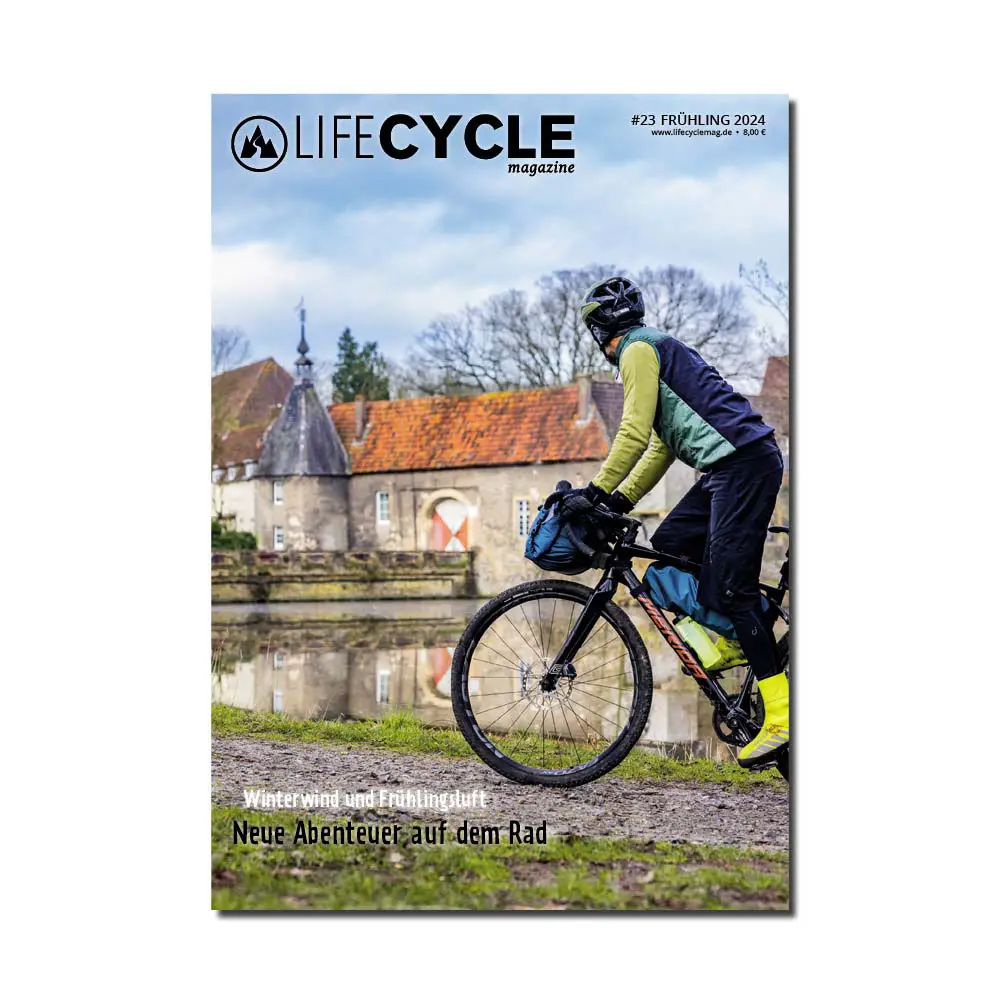
To this purpose, I packed my bikepacking bags, strapped them to the Silex and rode it to Münsterland. There I tried out the “Castles & Cakepacking“ route. It offers a great mix of cycle paths, farm tracks and trails. You also get a varied view of the Münsterland region and numerous castles and fortresses in the area. And of course there’s cake – hence the term “cakepacking”. Long story short: You can read about what I experienced in Münsterland and whether it’s worth retracing the route in our issue #23. But this is all about the Silex.
Merida Silex 2020 vs Merida Silex 2024 review – what are the differences?
When I look at photos of the Silex 6000+, which I was allowed to test in 2020, and compare them with the new model, a few differences immediately stand out. The new model – which, incidentally, has only had the new frame since model year 2024 – looks significantly less “angular” than its predecessor. The head tube area appears more “fluid” and has become more compact, the fork no longer has this optical “kink”, but runs straight. The chainstays run clearly downwards towards the bottom bracket. There is a new integrated seat clamp: the seat post is clamped from above, no longer from the side of the top tube. This results in a cleaner look. The cables still run in the frame, but in the 2024 model they disappear directly “in” the headset and are virtually invisible.
The Silex has therefore undergone an intensive optical evolution. It is less angular overall, instead very pleasing, soft and incredibly clean. To a certain extent, this also reflects the orientation of the gravel bike concept: originally, the Silex had clear mountain bike genes. It had a fairly high front end with a long head tube and also rode comparatively playfully. The Silex 6000+ tested at the time went one better with its wide 650B tyres and proved to be an even more off-road capable member of the Silex family.
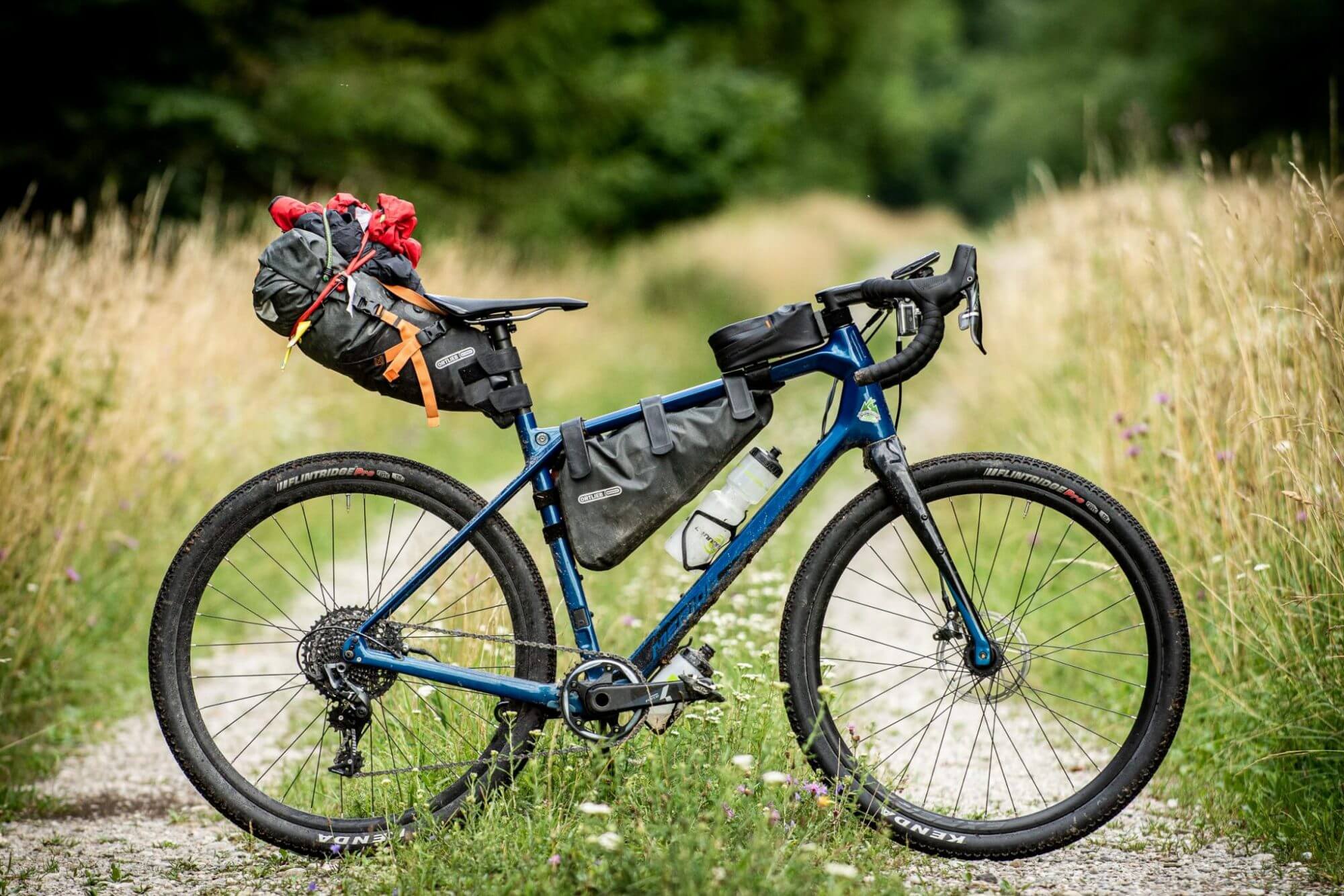

At first glance, this aspect is not reflected in the current model range. There is no longer a 650B version and a look at the geometry table indicates that the Silex has “grown up” overall. The “reach” became longer, the “stack” shorter, the steering angle slacker, the wheelbase longer. Theoretically, I will sit a little more stretched, “sportier” and I expect a very stable, balanced ride. Compared to the last Silex test, I would no longer describe the current geometry as playful, but rather as modern and balanced. But enough theoretical analysis… Let’s take a quick look at the equipment.
Merida Silex 2024 review – components and set-up
The Silex 7000 is the second most expensive model in Merida’s Gravel family. Only the “Silex 10k” goes one better. However, this is very clear: only high-end is used here. The 10k is therefore almost three times as expensive as the Silex 7000 and actually plays in a league of its own. The Silex 7000, on the other hand, remains true to the original Merida philosophy: it is “reasonably” equipped and offers a lot of bike for a reasonable price. 3,249 euros is the recommended retail price.
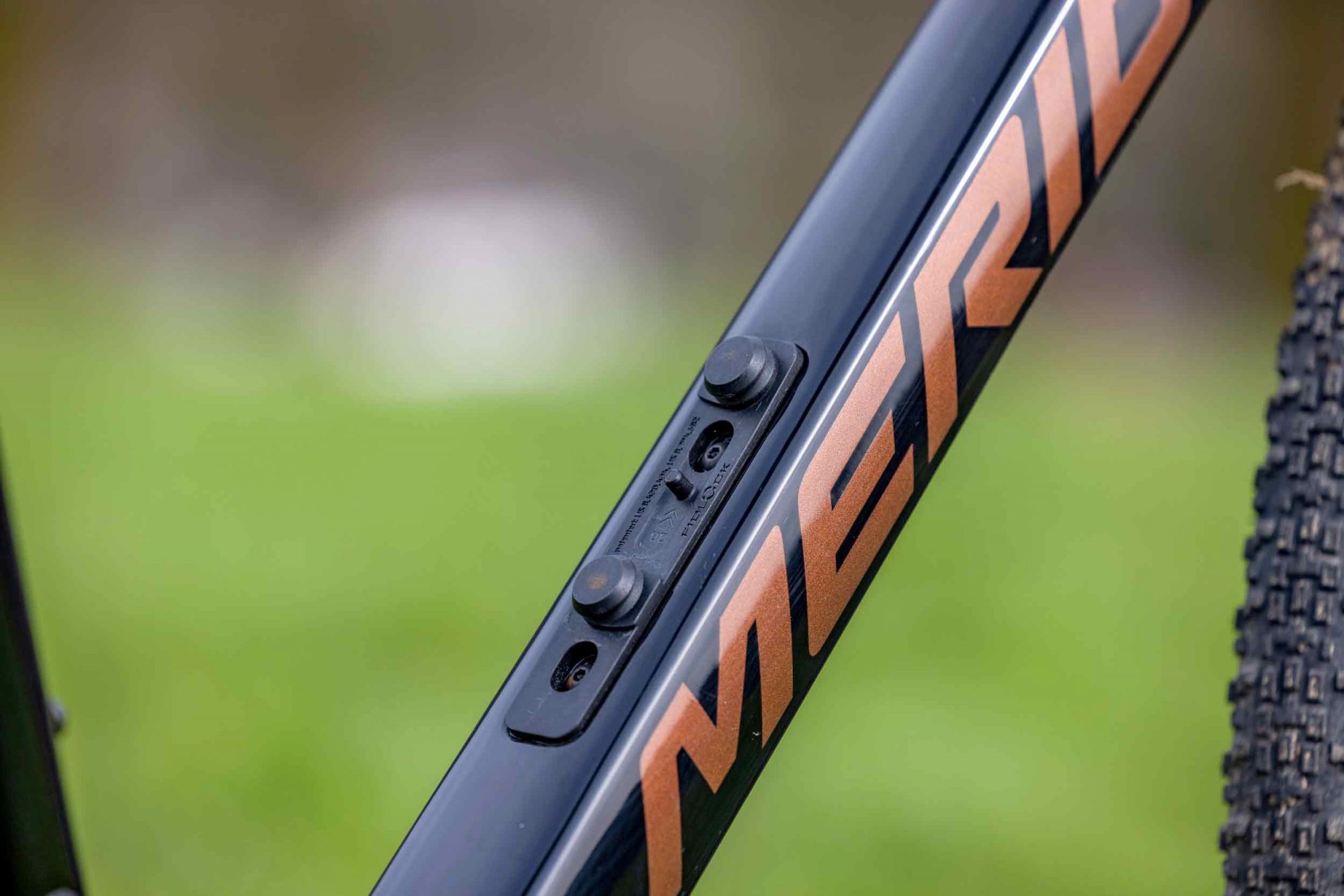
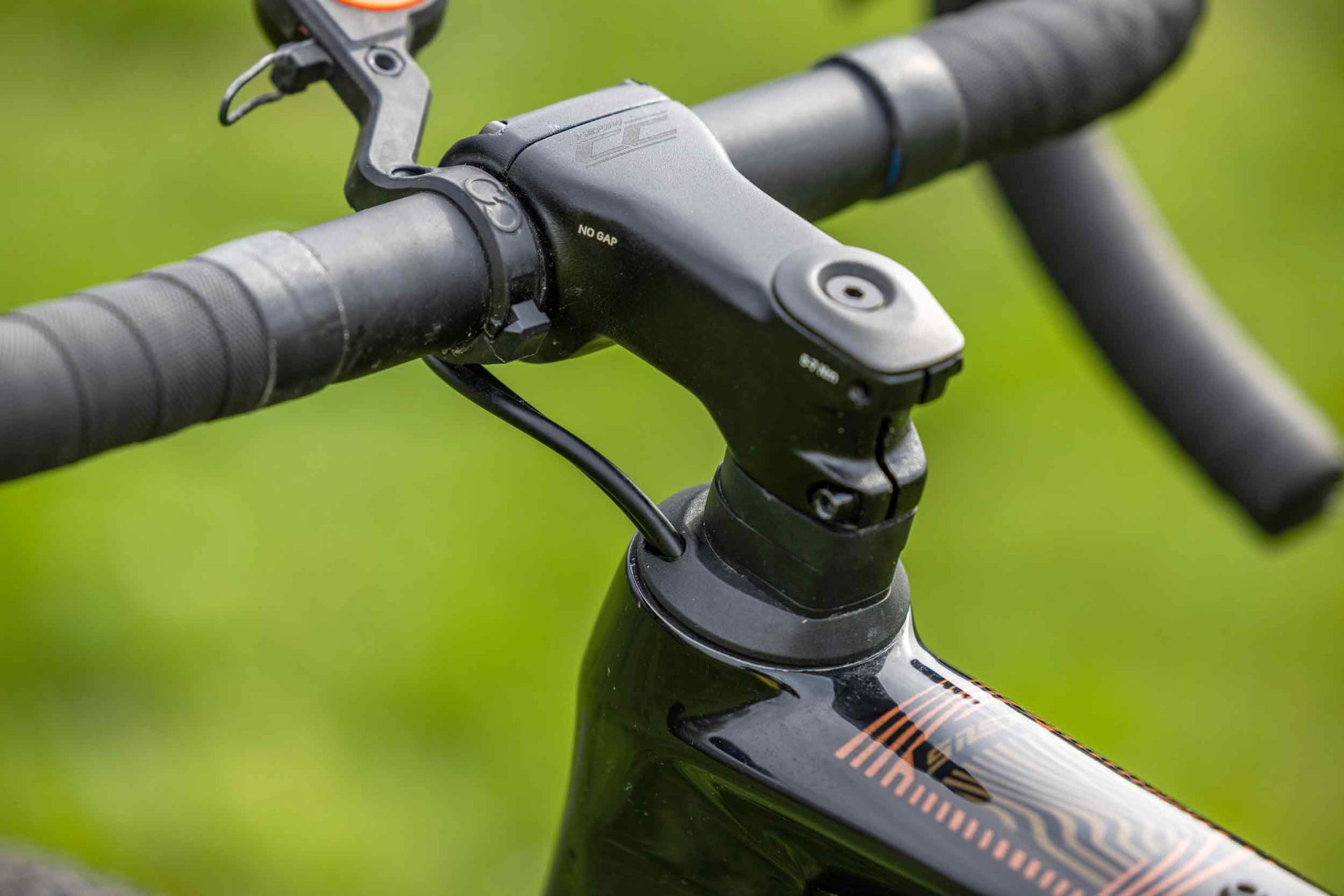
In return, you get down-to-earth equipment, which essentially consists of a mechanical Shimano GRX groupset with 1 x 12 drivetrain and all kinds of in-house parts. An interesting feature of the drivetrain: a cassette from the SLX mountain bike groupset is fitted, which with its 10-51 teeth also provides the right gear ratio for steep climbs. In combination with the 42-tooth chainring, I feel perfectly equipped for the hilly Sauerland. The equipment also includes many in-house add-on parts such as handlebars, stem and saddle. The aluminium wheelset comes from Easton and is fitted with Maxxis Rambler tyres. This package is robust, but at 9.46 kilograms it is not super light.
In addition to the parts, it is worth taking a look at the frame, which looks very well thought out and has a number of features to offer. The numerous threaded eyelets for bikepacking accessories and mudguards are remarkable. You can easily “load up” the bike properly, for example for a long bikepacking trip. You can simply retrofit mudguards for everyday use. However, there is no option to attach a luggage rack. You can mount cages on the fork for this purpose. This is also optimised for mounting a hub dynamo. In terms of tyre choice, you can fit models up to 700×45 mm.
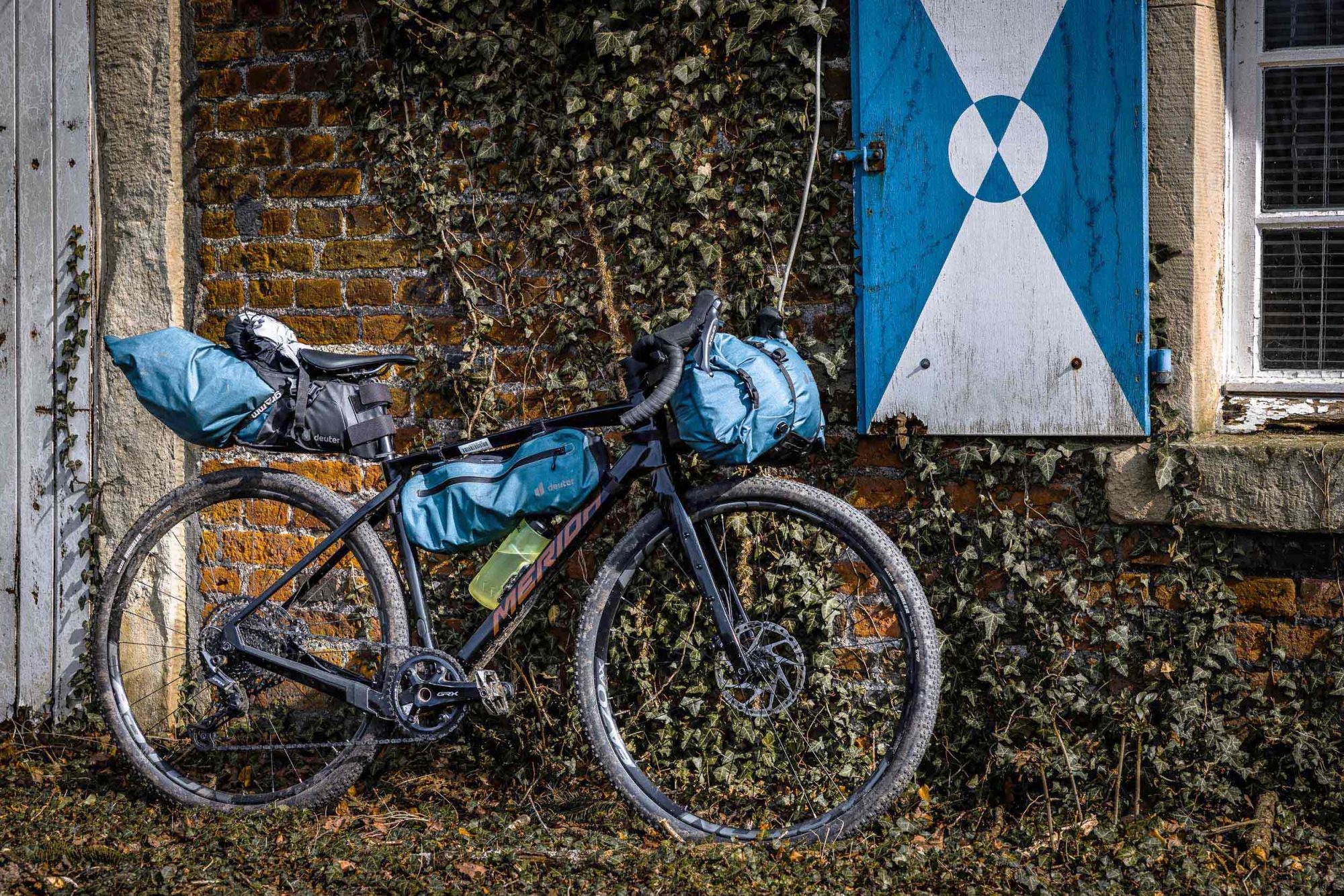
My set-up for the Münster weekend is very classic: handlebar rollers, frame bag and arse bomb. Plus a water bottle, a bike computer mount and battery-powered lights for the twilight. Everything fits without any fiddling. What I notice very positively when packing is the extremely clean cable routing at the front: the cables and lines disappear from the handlebars directly into the headset without the conventional “loop”. They are virtually non-existent and can therefore neither interfere with the mounting of the handlebar castor nor rub against the frame and leave nasty marks. That makes sense.
Merida Silex 2024 Review – The test rides
To put the bikepacking characteristics of the Merida Silex 2024 to the test, I cycled the Castles & Cakepacking route through Münsterland. This tour is not a real challenge in terms of metres in altitude. It’s flat in the Münsterland. Nevertheless, a very varied route with many typical gravel elements awaited me here. In the Hohe Mark and in the Baumberge there were even a few tough climbs and a few nice trails. Apart from that, I also rode the Merida through the Sauerland at home, so I was able to get a colourful impression of the bike’s riding characteristics.
I’ll start with my first impressions on my home circuit. Of course, I still had my last Silex ride in the back of my mind. Compared to the 2020 model, I immediately notice it: The current Silex rides much more “unobtrusively”. The MTB influences that were clearly noticeable back then have faded a little into the background.
Instead, I’m sitting on a very well-balanced, absolutely all-round endurance gravel bike with no frills. In other words, the bike does what it is supposed to do. It feels efficient and fast and is a lot of fun on the first few rides. It may not be the lightest bike, but it clearly conveys the feeling that this bike is robust and won’t break easily. Not even if I ride it off-road a lot and take it on a few trails.
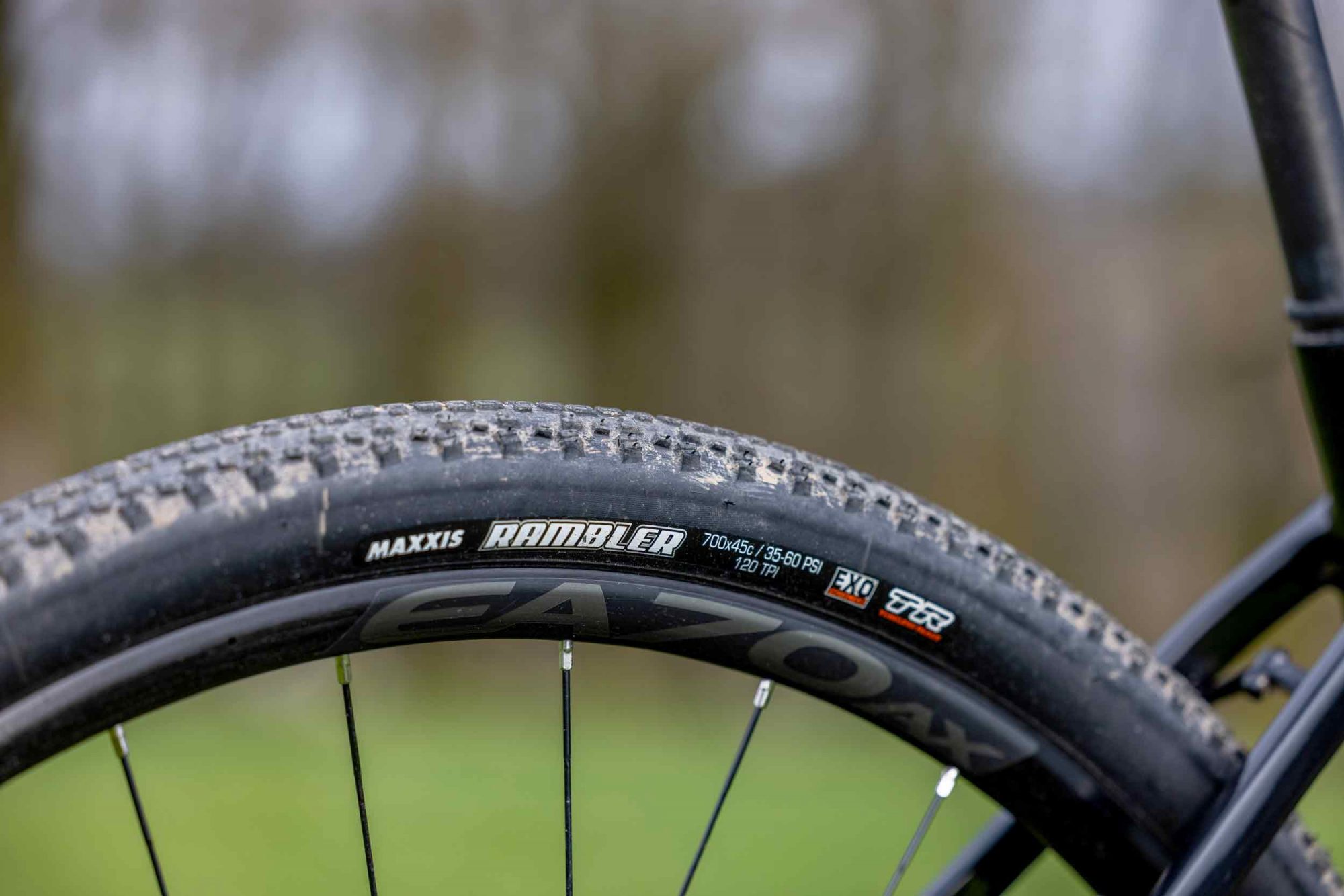
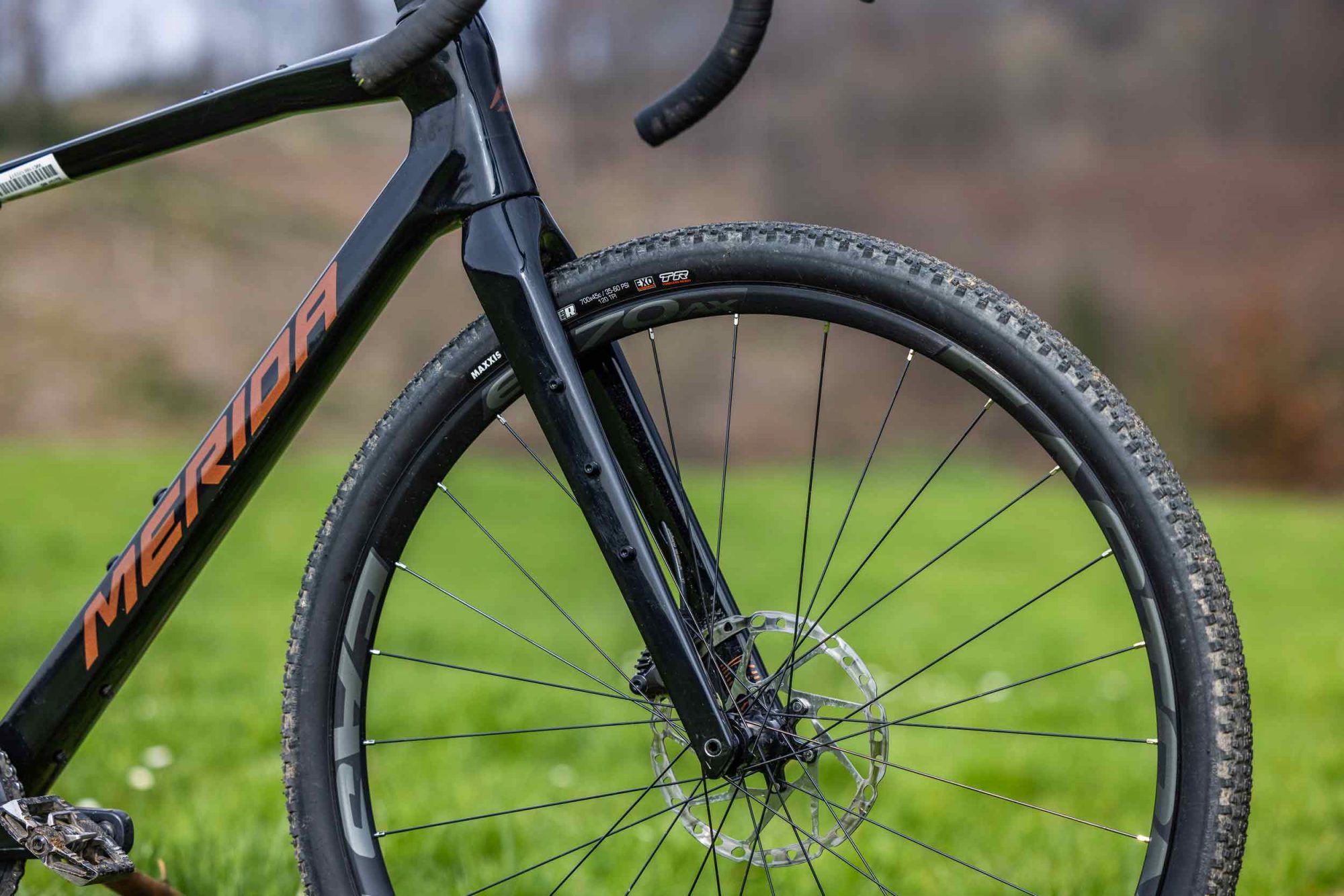
By the way: less MTB genes does not necessarily mean that the new Merida Silex 7000 test bike is less fun on single trails and generally on demanding terrain. After all, the modern geometry provides a very flat steering angle, which contributes to a high feeling of safety. Although I sit more sportily on the bike, it is still easy to control even on very bumpy surfaces. Overall, however, it simply feels more like a dropbar bike than its predecessor.
The reliability of the new Silex is a pleasant factor on a bikepacking trip. It’s simply worth its weight in gold when I can rely on my equipment. And this is absolutely true in the case of the Silex 7000. The little bit of extra weight – whatever. The bike is fully loaded with a tent, sleeping bag and a change of clothes anyway – so in the end it doesn’t matter whether the bike itself weighs 8 or 9 kilos. I certainly don’t have any problems with my equipment when I’m out and about in Münsterland.
The bike rides, the load holds. The cable routing at the front of the handlebars is a great feature (as mentioned above). It is often the case that there is always something interfering with the handlebars, usually involving cables or wires. That can’t happen on my Merida Silex 2024 test bike, which I think is good.
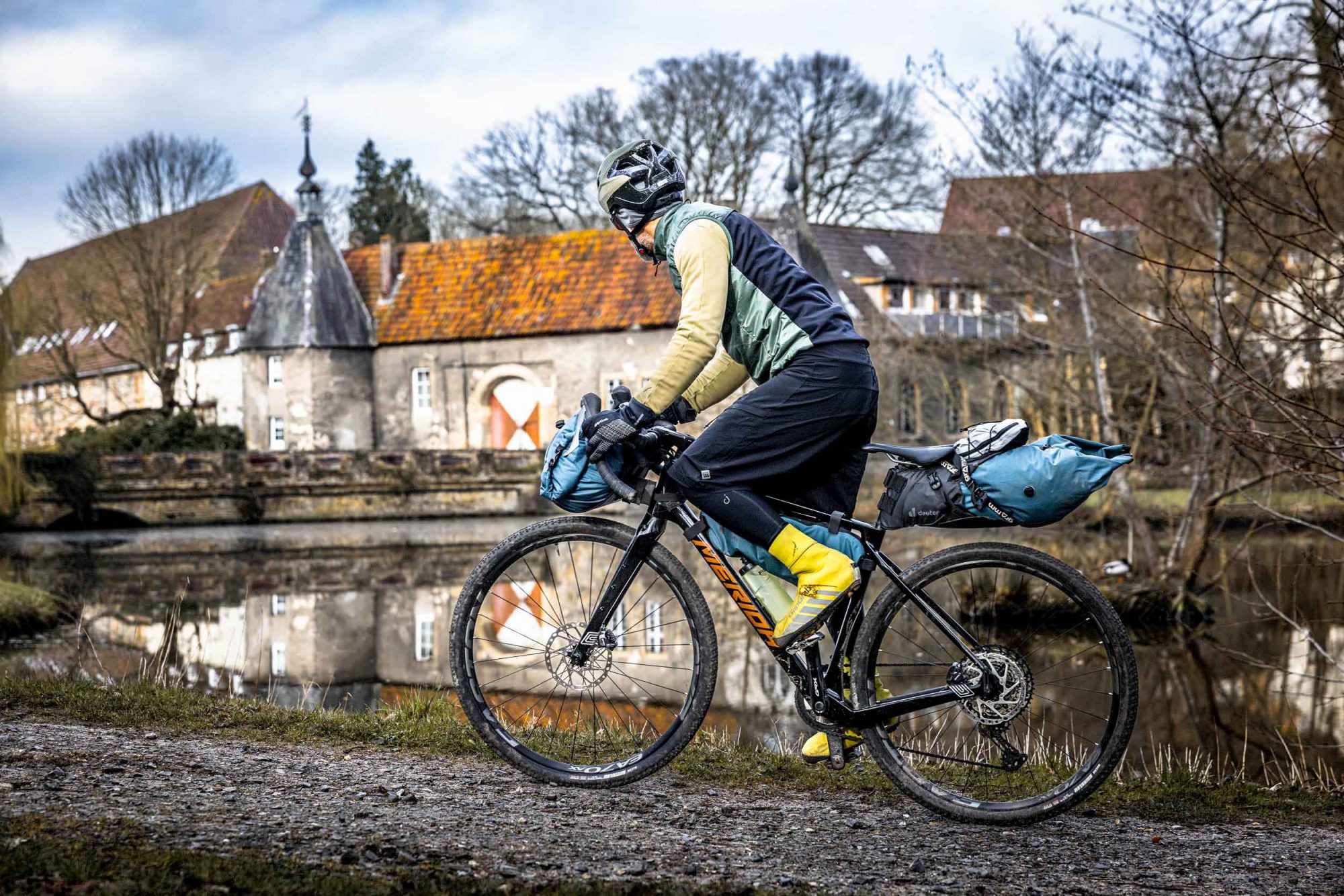
I noticed a few little things that bothered me during this Merida Silex 2024 test. Firstly: The small emergency tool set under the saddle. Basically a good idea and well-intentioned. I just found it extremely fiddly to get the tool out of its mount and back in again. That would annoy me in the long run. The small tool pack is also in the way when I want to attach my saddle bag. I have to fumble their straps around the tool. It worked, but it was annoying.
Point two refers to the pretty, but also somewhat annoying saddle clamp. Initially it had come loose and on my first few rides I learnt that it was difficult to tighten with some mini-tools. It works much better with a single Allen key. If you forget it, it can be fiddly under certain circumstances. What bothers me is that this clamping is actually just an optical thing. A conventional seatpost clamp is simply tried and tested. In addition, the rubber cap over the clamp kept moving – and that was it for the optical plus.
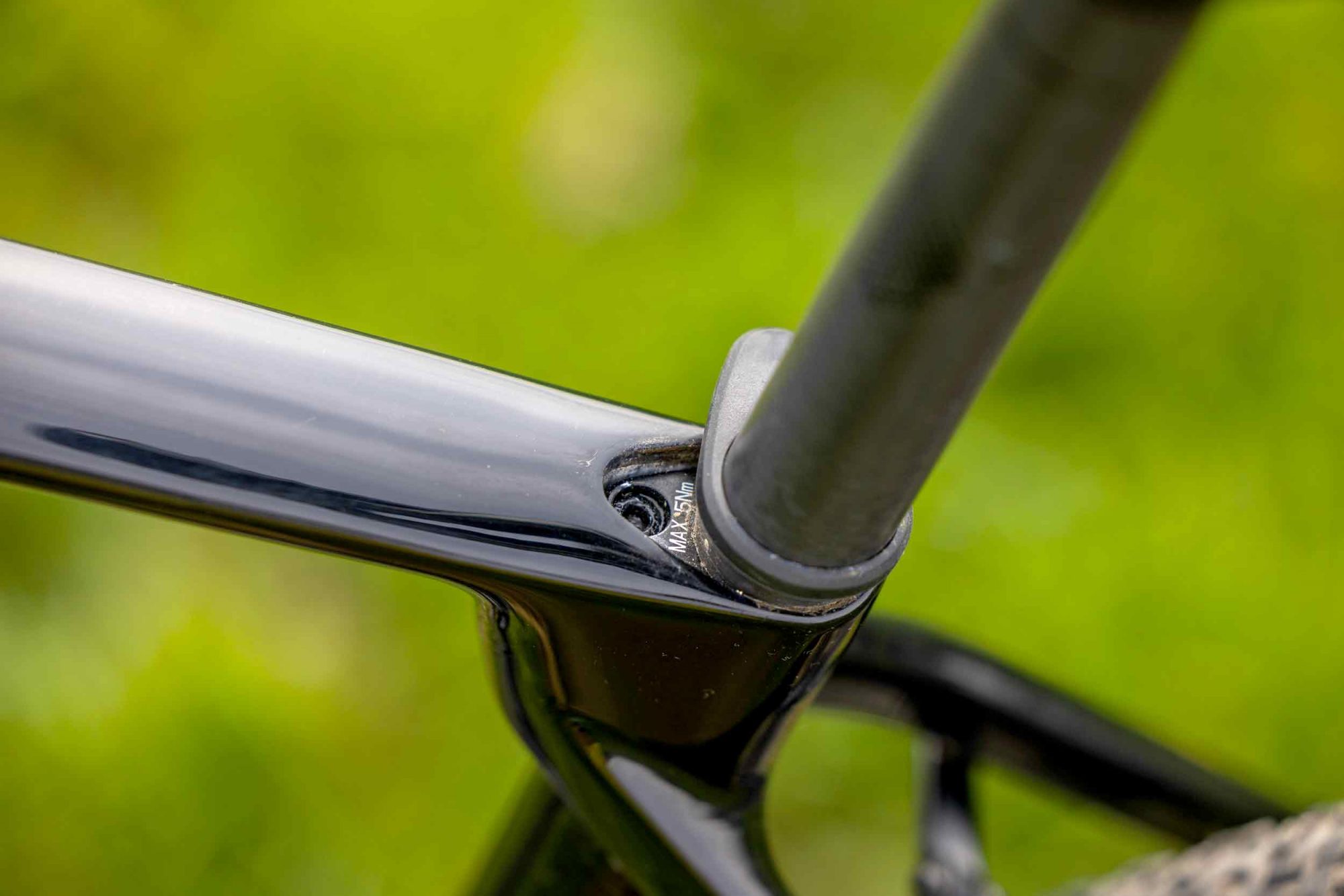
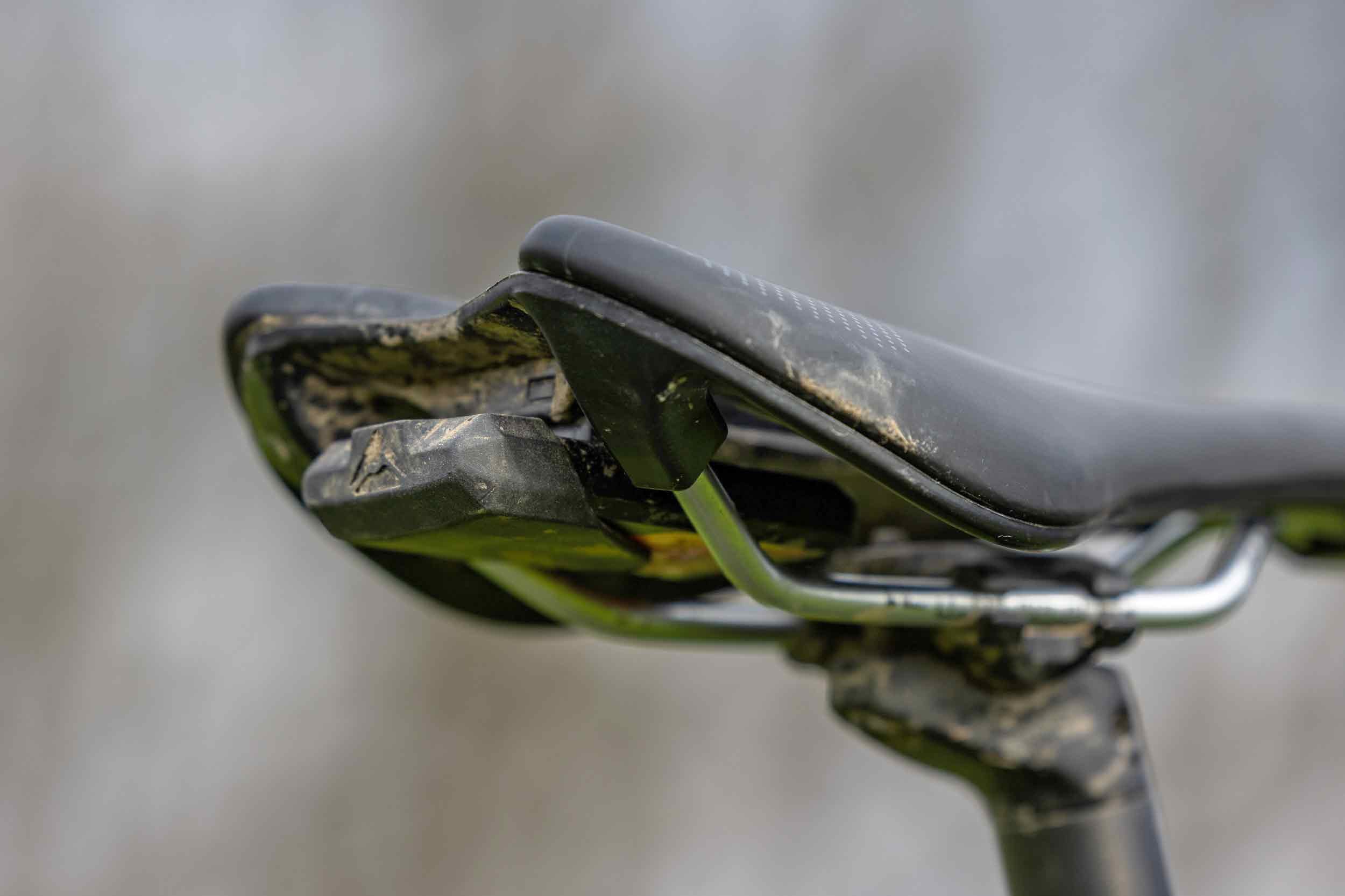
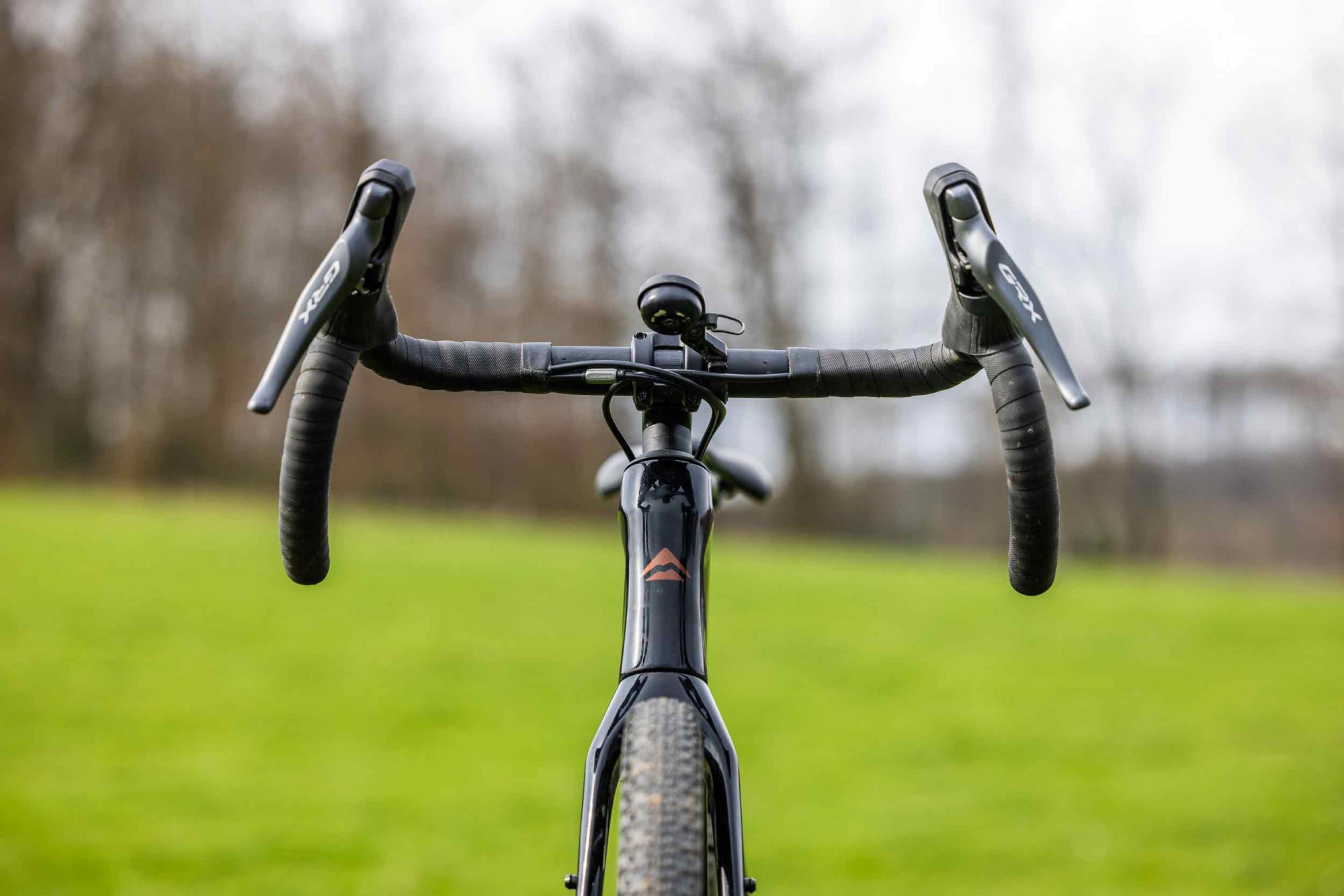
Last but not least, my third point of criticism. This is about the handlebars. This is relatively narrow, has a round profile and has almost no backsweep or flair. On the one hand, it feels relatively “tight” at the front. I actually think the handlebars are a bit uncomfortable in the long run and my hands occasionally fall asleep. The thin handlebar tape doesn’t make it any better. In other words, I personally see significant potential for improvement in the Silex cockpit. In any case, there are some gravel handlebars that I would personally like better on this bike.
Merida Silex 2024 review – my conclusion
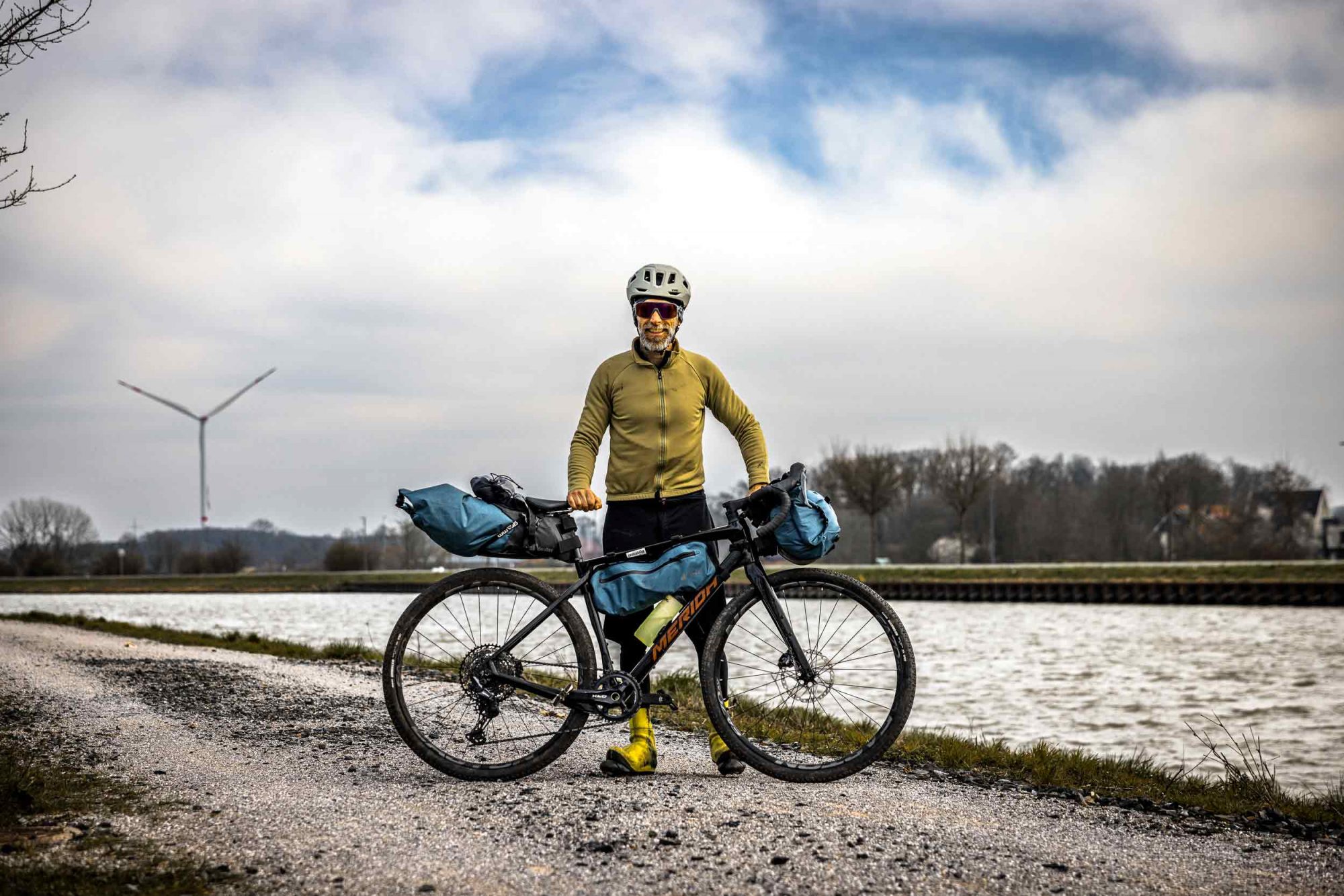
The Silex has grown up! This is how I can summarise my conclusion in a nutshell. Slightly longer version: The new frame has done away with optical “gimmicks” as well as minor geometry experiments with mountain bike influences. The result is an extremely clean, well thought-out and modern frame that fulfils all the requirements of a balanced endurance gravel bike.
The Merida is a good mix of “sporty” and comfortable. Nice details are the consistent internal cable routing without annoying loops on the handlebars, the good all-round tyres, but also the wide gear range with mountain potential. I was less convinced by small details such as the integrated saddle clamp, the fiddly emergency tool and the old-fashioned, somewhat uncomfortable handlebars.
I am completely satisfied with the riding characteristics! The new Silex is a little less playful. Nevertheless, I had a lot of fun, especially on the more technical paths and trails! The bike rides safely and comfortably. Nevertheless, it makes a very efficient impression on fast routes. And that’s a pretty good mix for you if you’re looking for a balanced all-round gravel bike. Whether it’s for a playful after-work ride at home or a long-planned bikepacking holiday: the Silex is ready for it and a reliable, versatile companion.